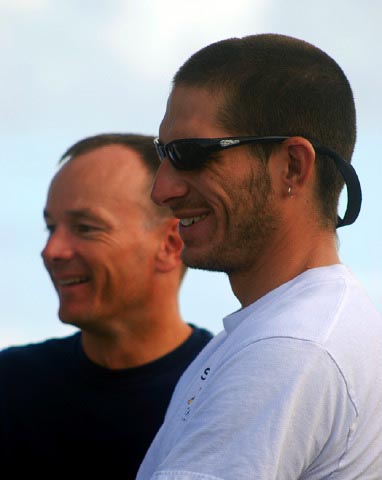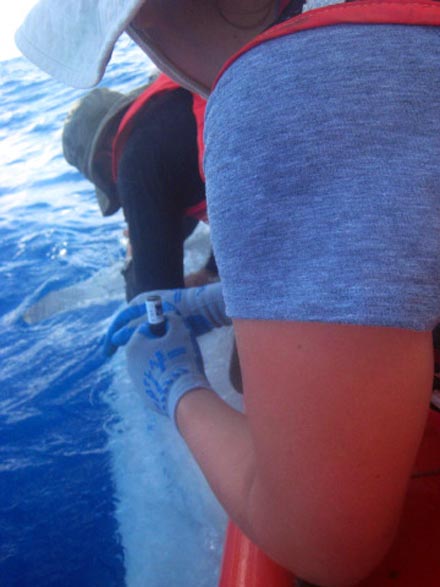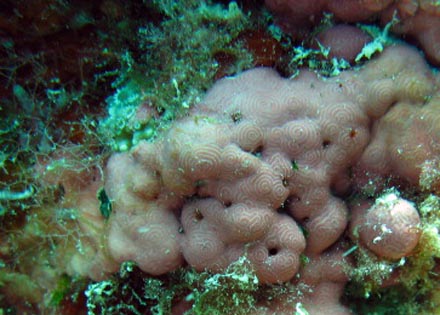|
You
are here: /main/research
expeditions/July 2007/Journal
Day 8
Journal
Day 8 - Lisianski Island
by Keeley Belva
Don’t forget—if you’re in Honolulu, you
can learn more about the Monument at the Outrigger Waikiki
Beach hotel when NWHI researchers “talk story” Saturdays
in July from 9-11am.
Click
here to see where the Hi'ialakai is now.
Click
here to see current data from the ship.
Today we are at Lisianski Island and far off in the distance
you can make out the greenish color of the clouds above the
sandy shoals of the island. Sunlight reflected upward
from the shallow reefs gives the clouds an aquamarine tint. And
somewhere out there are the research boats. One of
the research boats has mechanical trouble so we have had
to adjust which teams are going out when for the last couple
of days.
This area has been a good environment for the teams working
on coralline algae and apex predator tagging. In fact
on our initial trip to the shallow waters off the island,
we saw a tiger shark almost immediately. Luckily the
researchers retrieved the receiver that collects data on
tagged animals before the shark noticed us.

Carl Meyer & Yannis Papastamatiou,
HIMB scientists researching habitat range of apex predators.
Credit: Ziggy Livnat
The receiver was placed there about a year ago and the team,
led by Carl Meyer, was bringing it back to the ship to see
if any of the animals that had been tagged the previous year
had gotten close enough to register on it. The receiver
picks up the frequency of a transmitter that has been implanted
into the animal—in this case sharks. The transmitter
is about the size of a finger and is inserted through an
incision that is no more than an inch long. Through the information
collected by the receivers, the researchers can learn where
the animal moves to or if it stays in the same area. This
information on the animals’ habitat range and movement
patterns gives managers more information on how to better
protect Monument resources.

Implanting a transmitter into a large shark. Credit: Keeley
Belva
The coralline algae team, led by Cheryl Squair, is also
excited to be spending a few days at Lisianski. This
team is investigating crustose coralline algae, which are
hard, calcified organisms that make up much of the reef structure. This
algae is what strengthens reefs as an initial substrate and
later provides habitat for organisms including coral. At
northern latitudes such as the NWHI, coralline algae are
even more important than corals in building reef structure,
yet their taxonomy and diversity are very poorly understood. The
sampling that is taking place on this trip is a first attempt
to assess diversity and identify habitat in order to establish
a baseline in the Monument.

Corraline algae at Lisianski Island. Credit: Cheryl Squair
After two busy days at Lisianski, we depart Tuesday for
our next stop: Pearl and Hermes Atoll. Check
back soon!
Don’t
forget—if you’re in Honolulu, you can learn more
about the Monument at the Outrigger Waikiki Beach hotel when
NWHI researchers “talk story” Saturdays in July
from 9-11am.
Click
here for maps of the region
|